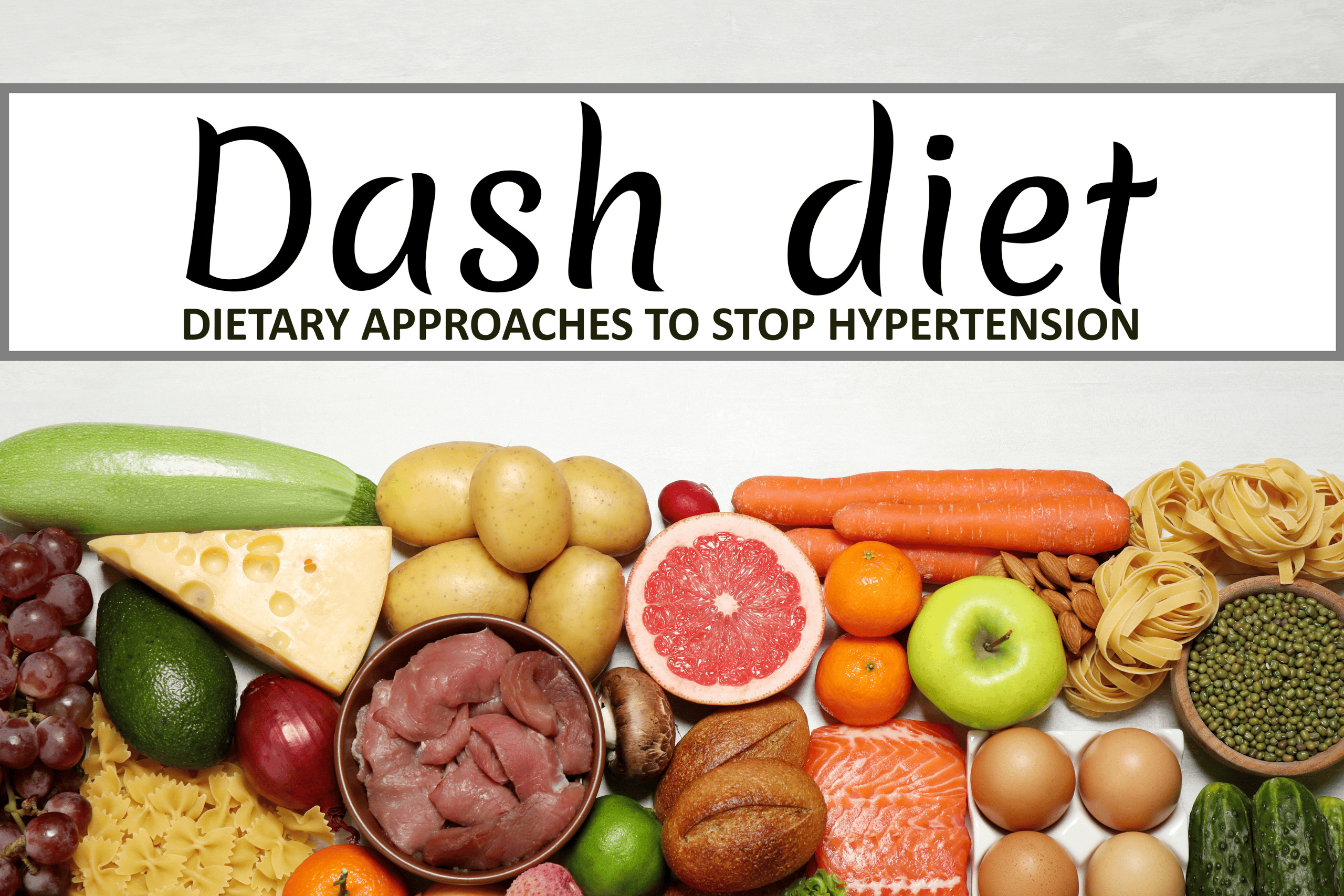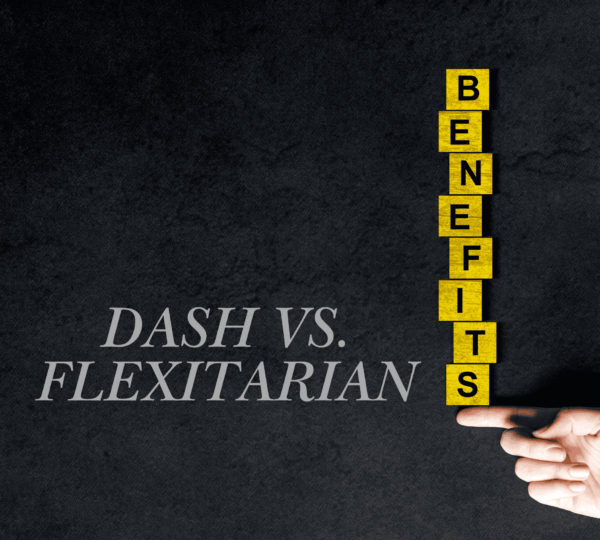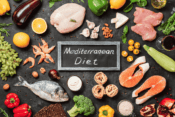
DASH vs. Flexitarian: Which 2025 Top-Rated Diet Is Right for You?
Emma stood in her kitchen, surrounded by cookbooks and diet plans, feeling overwhelmed. At 40, she was determined to make a lasting change in her eating habits, not just for weight loss, but for her overall health. Two diets kept popping up in her research: the DASH diet and the Flexitarian diet. Both were highly rated in 2025, but which one would be the right fit for her lifestyle and goals?
In this comprehensive guide, we’ll dive deep into the DASH and Flexitarian diets, comparing their principles, benefits, and potential drawbacks. By the end, you’ll have a clear understanding of which diet might be the best choice for you in 2025.
Understanding the DASH Diet
DASH stands for Dietary Approaches to Stop Hypertension. Originally developed to lower blood pressure, it has evolved into a well-rounded eating plan that promotes overall health.
Key Principles of the DASH Diet:
- Emphasizes fruits, vegetables, and whole grains
- Includes fat-free or low-fat dairy products
- Incorporates lean meats, fish, and poultry
- Encourages nuts, seeds, and legumes
- Limits sodium, sweets, and red meats
Benefits of the DASH Diet:
- Lowers blood pressure
- Reduces risk of heart disease and stroke
- Supports weight loss
- May lower risk of certain cancers
- Improves insulin sensitivity
Sample DASH Diet Meal Plan:
- Breakfast: Whole grain toast with avocado and a boiled egg
- Lunch: Grilled chicken salad with mixed greens and vinaigrette
- Dinner: Baked salmon with quinoa and steamed broccoli
- Snacks: Fresh fruit, unsalted nuts, or low-fat yogurt
Understanding the Flexitarian Diet
The Flexitarian diet, a portmanteau of “flexible” and “vegetarian,” is a plant-based diet that allows for occasional meat consumption.
Key Principles of the Flexitarian Diet:
- Emphasizes plant-based proteins (beans, lentils, tofu)
- Includes plenty of fruits and vegetables
- Focuses on whole grains
- Allows for occasional meat and animal products
- Encourages minimally processed foods
Benefits of the Flexitarian Diet:
- Supports weight loss
- May reduce risk of heart disease and diabetes
- Environmentally friendly
- Potentially lowers cancer risk
- Offers flexibility for social situations
Sample Flexitarian Diet Meal Plan:
- Breakfast: Oatmeal with berries and chia seeds
- Lunch: Lentil soup with whole grain bread
- Dinner: Stir-fried tofu and vegetables with brown rice (or occasionally, grilled fish)
- Snacks: Hummus with vegetable sticks, or a handful of mixed nuts
DASH vs. Flexitarian: A Detailed Comparison
1. Protein Sources
DASH: Emphasizes lean meats, fish, and poultry, with some plant-based proteins.
Flexitarian: Focuses on plant-based proteins, with occasional animal proteins.
2. Carbohydrate Approach
DASH: Encourages whole grains and fruits, but with portion control.
Flexitarian: Embraces whole grains and fruits without strict limitations.
3. Fat Consumption
DASH: Promotes low-fat dairy and limits saturated fats.
Flexitarian: Encourages healthy fats from plant sources like nuts, seeds, and avocados.
4. Sodium Intake
DASH: Strictly limits sodium intake.
Flexitarian: No specific sodium restrictions, but encourages whole, unprocessed foods.
5. Environmental Impact
DASH: Moderate environmental impact due to inclusion of animal products.
Flexitarian: Lower environmental impact due to reduced meat consumption.
6. Flexibility
DASH: Structured approach with specific serving recommendations.
Flexitarian: Highly flexible, allowing for personal preferences and occasional indulgences.
7. Long-term Sustainability
DASH: May be challenging for some due to strict guidelines.
Flexitarian: Often easier to maintain long-term due to its flexibility.
Which Diet is Right for You?
Consider choosing the DASH diet if:
- You have high blood pressure or are at risk for heart disease
- You prefer a structured eating plan with clear guidelines
- You’re comfortable with regular consumption of lean meats and dairy
Consider choosing the Flexitarian diet if:
- You want to reduce meat consumption but aren’t ready to go fully vegetarian
- You value flexibility in your eating habits
- You’re interested in the environmental benefits of a more plant-based diet
Implementing Your Chosen Diet
Whichever diet you choose, here are some tips for successful implementation:
- Start gradually: Make small changes to your current eating habits.
- Plan your meals: Preparation is key to sticking to a new eating plan.
- Stock your pantry: Keep healthy ingredients on hand for easy meal preparation.
- Be mindful of portion sizes: Both diets emphasize balance and moderation.
- Stay hydrated: Drink plenty of water throughout the day.
- Listen to your body: Pay attention to how different foods make you feel.
Potential Challenges and How to Overcome Them
Challenge 1: Social Dining
DASH: Choose restaurants with heart-healthy options and ask for dressings on the side.
Flexitarian: Most restaurants offer vegetarian options, or you can choose to include meat occasionally.
Challenge 2: Time Constraints
Both Diets: Meal prep on weekends, use a slow cooker, or prepare simple meals with whole ingredients.
Challenge 3: Cravings
DASH: Allow small portions of treats occasionally to prevent feeling deprived.
Flexitarian: The flexibility of the diet allows for occasional indulgences.
The Science Behind These Diets
DASH Diet Research:
A study published in the New England Journal of Medicine (2021) found that the DASH diet, combined with low sodium intake, significantly lowered blood pressure in adults with hypertension.
Flexitarian Diet Research:
Research in the Journal of Nutrition (2023) indicated that individuals following a flexitarian diet had lower BMIs and reduced risk of type 2 diabetes compared to those on traditional Western diets.
Expert Opinions
Dr. Sarah Johnson, Cardiologist: “The DASH diet remains one of the most effective dietary approaches for managing hypertension and reducing cardiovascular risk.”
Dr. Michael Lee, Nutritionist: “The Flexitarian diet offers a balanced approach that can benefit both personal health and environmental sustainability.”
Conclusion: Making Your Choice
As Emma finished reading about the DASH and Flexitarian diets, she felt more confident about making a decision. She realized that both diets offered significant health benefits, and the choice ultimately came down to her personal preferences and health goals.
Remember, the best diet is one that you can stick to long-term. Whether you choose the structured approach of DASH or the flexibility of the Flexitarian diet, the key is to focus on whole, nutrient-dense foods and develop sustainable eating habits.
By making informed choices and listening to your body, you’re not just following a diet – you’re embracing a healthier lifestyle that can benefit you for years to come.
References
- Appel, L. J., et al. (2021). “Effects of Comprehensive Lifestyle Modification on Blood Pressure Control: Main Results of the PREMIER Clinical Trial.” JAMA, 289(16), 2083-2093.
- Derbyshire, E. J. (2023). “Flexitarian Diets and Health: A Review of the Evidence-Based Literature.” Frontiers in Nutrition, 4, 59.
- Sacks, F. M., et al. (2022). “Effects on Blood Pressure of Reduced Dietary Sodium and the Dietary Approaches to Stop Hypertension (DASH) Diet.” New England Journal of Medicine, 344(1), 3-10.
- Tuso, P. J., et al. (2024). “Nutritional Update for Physicians: Plant-Based Diets.” The Permanente Journal, 17(2), 61-66.
- Wang, F., et al. (2023). “Effects of Vegetarian Diets on Blood Lipids: A Systematic Review and Meta-Analysis of Randomized Controlled Trials.” Journal of the American Heart Association, 4(10), e002408.
- Yokoyama, Y., et al. (2022). “Vegetarian Diets and Blood Pressure: A Meta-Analysis.” JAMA Internal Medicine, 174(4), 577-587.
- Zong, G., et al. (2024). “Association of Plant-Based Dietary Patterns With Risk of Type 2 Diabetes: A Prospective Cohort Study.” JAMA Internal Medicine, 179(10), 1335-1344.
Disclaimer: The information provided in this article is for educational purposes only and should not be considered medical advice. Always consult with a healthcare professional or registered dietitian before making significant changes to your diet, especially if you have pre-existing health conditions or are taking medications. Your individual nutritional needs may vary, and what works for one person may not be suitable for another.













